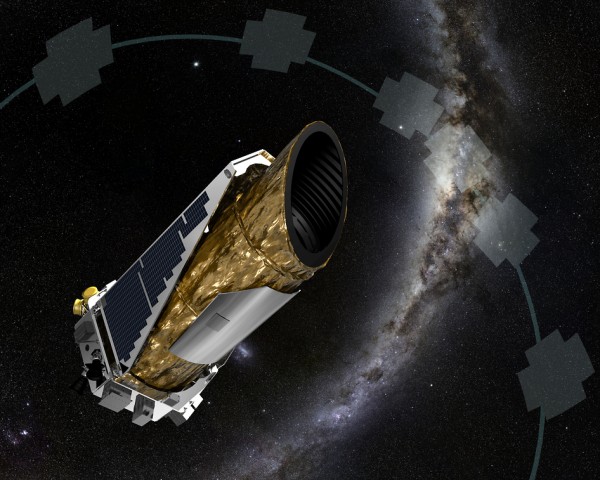Faulty Kepler Space Telescope Discovers More Super Earth Exoplanets
| Ana Verayo | | Dec 19, 2014 06:46 AM EST |
(Photo : NASA Ames/JPL-Caltech/T Pyle) The K2 mission observes a specific portion of the distant sky for 80 days.
The crippled Kepler space telescope orbiting the Earth found a new exoplanet as part of its new K2 mission despite being hamstrung by faulty reaction wheels that prevent it from pointing in the right direction.
Kepler's discovery of HIP 11645b was also confirmed by the HARPS-North spectrograph from the Telescopio Nazionale Galileo located in the Canary Islands.
Like Us on Facebook
The exoplanet is about two and a half times the size of Earth and orbits its star every nine days. Located in the Pisces constellation, HIP 11645b is about 180 light years away from Earth.
Scientists believe the planet may not be conducive to life since its surface temperatures are scorching.
The K2 mission observes a specific portion of the distant sky for 80 days until it becomes necessary to rotate Kepler to prevent sunlight from entering the telescope.
Kepler discovers exoplanets by following its transit around its star. A planet passing in front of its star creates a dimming effect and Kepler measures this reduced brightness.
Because of its faulty reaction wheels, Kepler's challenge is to maintain a steady position. Two of its positioning wheels failed to function and prevented Kepler from making delicate measurements.
New light literally came to Kepler's aid as the telescope now uses the pressure from sunlight to keep itself steady as it obtains measurements.
Kepler will continue its hunt for exoplanets and study star clusters, galaxies and supernovae.
Kepler's mission was not really considered productive after scientists discovered the faulty reaction wheels. The innovative solution by the NASA and Ball Aerospace team of using sunlight pressure as a reaction wheel makes further discoveries possible for follow-up studies by the James Webb Space Telescope to be launched in 2018.
Despite its problems, Kepler has discovered 1,000 exoplanets along with new data from 35,000 stars and other celestial bodies.
Andrew Vanderburg from the Harvard-Smithsonian Center for Astrophysics compares the telescope's comeback to a phoenix rising from its ashes.
TagsNASA's Kepler Space Telescope Finds Super Earth Exoplanet After 19 Months Hibernation, NASA, Kepler space telescope, Exoplanets
©2015 Chinatopix All rights reserved. Do not reproduce without permission
EDITOR'S PICKS
-

Did the Trump administration just announce plans for a trade war with ‘hostile’ China and Russia?
-

US Senate passes Taiwan travel bill slammed by China
-

As Yan Sihong’s family grieves, here are other Chinese students who went missing abroad. Some have never been found
-

Beijing blasts Western critics who ‘smear China’ with the term sharp power
-

China Envoy Seeks to Defuse Tensions With U.S. as a Trade War Brews
-

Singapore's Deputy PM Provides Bitcoin Vote of Confidence Amid China's Blanket Bans
-

China warns investors over risks in overseas virtual currency trading
-

Chinese government most trustworthy: survey
-

Kashima Antlers On Course For Back-To-Back Titles
MOST POPULAR
LATEST NEWS
Zhou Yongkang: China's Former Security Chief Sentenced to Life in Prison

China's former Chief of the Ministry of Public Security, Zhou Yongkang, has been given a life sentence after he was found guilty of abusing his office, bribery and deliberately ... Full Article
TRENDING STORY

China Pork Prices Expected to Stabilize As The Supplies Recover

Elephone P9000 Smartphone is now on Sale on Amazon India

There's a Big Chance Cliffhangers Won't Still Be Resolved When Grey's Anatomy Season 13 Returns

Supreme Court Ruled on Samsung vs Apple Dispute for Patent Infringement

Microsoft Surface Pro 5 Rumors and Release Date: What is the Latest?










